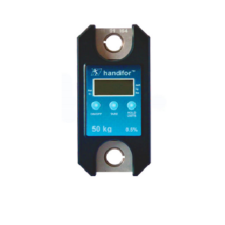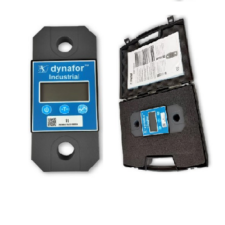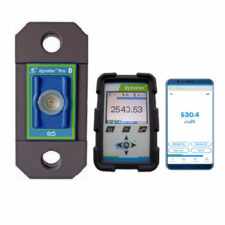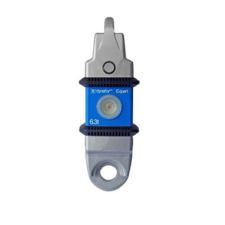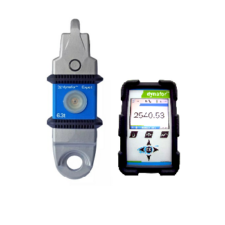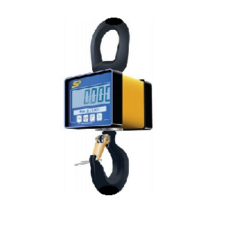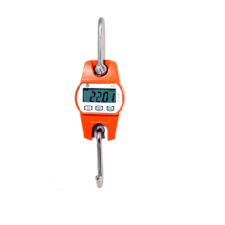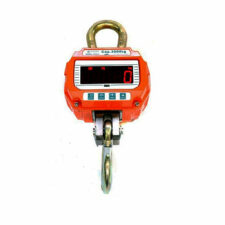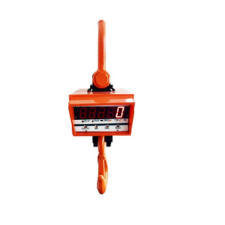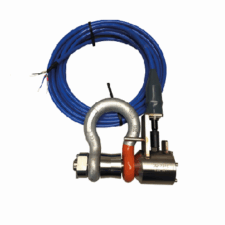Load cells and crane scales are types of load monitoring equipment which determine the precise weight of a load in real time. The forces implied by the load can also be measured which means that your load can be constantly monitored, thus ensuring safety at all times by eliminating the risk of overloading.
Why use Load Cells and Crane Scales?
Load monitoring with a load cell or crane scale helps to prevent overloading, thus ensuring safe and efficient lifting operations.
Industrial lifting applications that handle large, heavy and sometimes extreme loads typically use some form of crane and hoisting equipment. Each piece of lifting equipment will have a maximum working load limit which should never be exceeded as the consequences could be catastrophic. Lift failures on this or any level are serious with the impact hitting many areas, its not just the jobs downtime it affects, damage to equipment and other structures can be severe. Most importantly load failure can inflict injuries, some of them life changing or even loss of life.
The cost of any of these scenarios will probably be on a huge scale and can almost entirely eliminated with the right equipment. Knowing the true weight of your load can be quite difficult to determine, especially on larger loads but by using load cells or crane scales you ensure the load is continuously weighed throughout the lifting process as they remain in situ.
Using these devices ensures optimum safety whilst providing analytical data for precise record keeping – essential for health and safety regulations.
Using a Load Cell Of Crane Scale to Monitor Loads
It is often the case that the true weight of a load isn't known and thus guess work is undertaken. This should never happen! If your lifting equipment is overloaded it could be a costly disaster.
Once your load cell or crane scale is fitted to your crane or hoist a test lift can be undertaken to determine the loads weight. With a test lift the load is lifted just shy of the ground in a slow and controlled manner. Once the weight is precisely registered on your load monitoring device you can ascertain whether your lifting equipment is up to the task. It is always worth allowing some wiggle room with maximum WLL rather than take it right up to the hilt.
Whichever load weighing device you use there will be a method to read the technical details including load weight and typically the forces implied. Tare weight is another handy tool on many of these devices which enable you to remove the weight of any supplementary equipment so you get the loads true weight.
The display formats vary according to the model, it could be an incorporated display, separate hand held display or wired and plugged in to a PC.
How Do Load Cells and Crane Scales Work?
Both types of devices work on the strain gauge method, this is when a load is attached and when lifted stretches the load cells causing a tiny change in the electrical resistance. A transducer converts the force/resistance into an electrical signal according to its resistance proportional to the attached weight. This signal is then converted internally into a digital reading on your display.
Key Benefits of Accurate Load Monitoring
Monitoring your loads in real time has many benefits and enhances compliance to regulations.
Reduced risk of accidents and injuries is a key benefit for obvious reasons. Your lifting equipment lifespan can also be improved as weights and stresses implied can be easily monitored and kept well within limits. Thanks to the real time data provided by load cells and crane scales lifting tasks can be optimized and improve efficiency.
Types of Load Cells
Load cells can be used in a few different ways, weight inspection, tension control, load monitoring for goods in and out, packing weights ready for dispatch, construction applications and more.
There are a number of different types of load cells available in todays market. They have different load capacities and display functions and data output methods. The Lifting Gear Store has a varied collection of tension load cells to choose from Including the Handifor with a 200kg capacity; the Dynafor Industrial with up to 20 tonne capacity; the Dynafor Pro with a 200 tonne max capacity and the Expert model with a 10t limit.
The handifor and Industrial units have inbuilt displays whilst the pro and expert models have digital hand held displays. All are battery powered. The Dynafor Pro can use radio or Bluetooth signals to send data to the hand display and have different signal ranges. The Dynafor Expert has the added benefit of an app for your smart device/phone where data can be streamed to.
Find out all the specifics in the product pages above.
Types Of Crane Scales
As with tension load cells there are a good variety of crane scales available. We supply the most popular products including the Straightpoint mini weigher with up to 5t capacities; the OCS-L with 300kg capacities; the OCS-X has a 5t capacity and the OCS-Z has a 20 tonne capacity.
All crane scales have an onboard easy to read display, however there are some differences between models.
The mini weigher has the option of a hand-held monitor for easier control and reading. The OCS-L has a backlit display (no handheld or remote function). The OCS-X & Z models have bright LCD displays and can be operated via infra-red remote control.
Find out all the details in the relevant product pages above.




